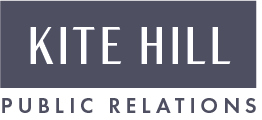Artificial intelligence (AI) is rapidly changing the world as we know it, and the communications and marketing industries are no exception. From shaping consumer interactions to creating real efficiencies with content creation, AI is already having a measurable impact on how businesses communicate with their audiences. This is a recurring theme in all sectors and industry events.
At the recent Marketecture Media conference, a few questions were posed to get us all thinking about the future of content consumption, ecommerce and discoverability:
Will websites still exist, and will AI be their primary user?
Will AI chatbots guide consumers through major purchases like cars?
Will consumers make purchases directly through conversations with AI?
As we thought about these questions, we naturally started to consider AI's Impact on the Marketing Funnel
Top of the Funnel: AI reinforces the importance of brand awareness and reputation, favoring content like news, thought leadership, and press releases. This is positive news for PR and communications professionals, as AI tools can enhance content creation and data-driven strategies.
Bottom of the Funnel: The consumer journey is expected to change dramatically, with AI chatbots potentially guiding purchasing decisions and facilitating direct purchases through conversations.
The New SEO
With AI playing a larger role in search, "Answer Engine Optimization" is the new SEO. Users will rely more on AI-generated search results and eventually AI chatbots to engage with digital content. Content will need to be adapted to align with AI algorithms and deliver optimal results.
How is AI Predicted to Impact the Industry Overall?
The rapid growth of AI adoption highlights its significant advantages. Forrester found that over 61% of U.S. advertising agencies are currently using and benefitting from genAI. Content creation can be automated by generating data-driven content including ad copy, social media posts, and personalized email campaigns. Targeting and personalization can be improved by analyzing consumer data, which increases engagement and conversion rates. Ad spend can be optimized by analyzing performance data and adjusting campaigns in real time to maximize ROI. Through predictive analytics, AI can forecast consumer behavior and market trends, enabling proactive decision-making. Furthermore, AI can facilitate new creative formats and streamline workflows, improving productivity and efficiency.
Overall, AI is expected to increase the focus on data and analytics, enabling marketers to measure and optimize campaign performance more effectively.
– Gina Preoteasa, EVP

